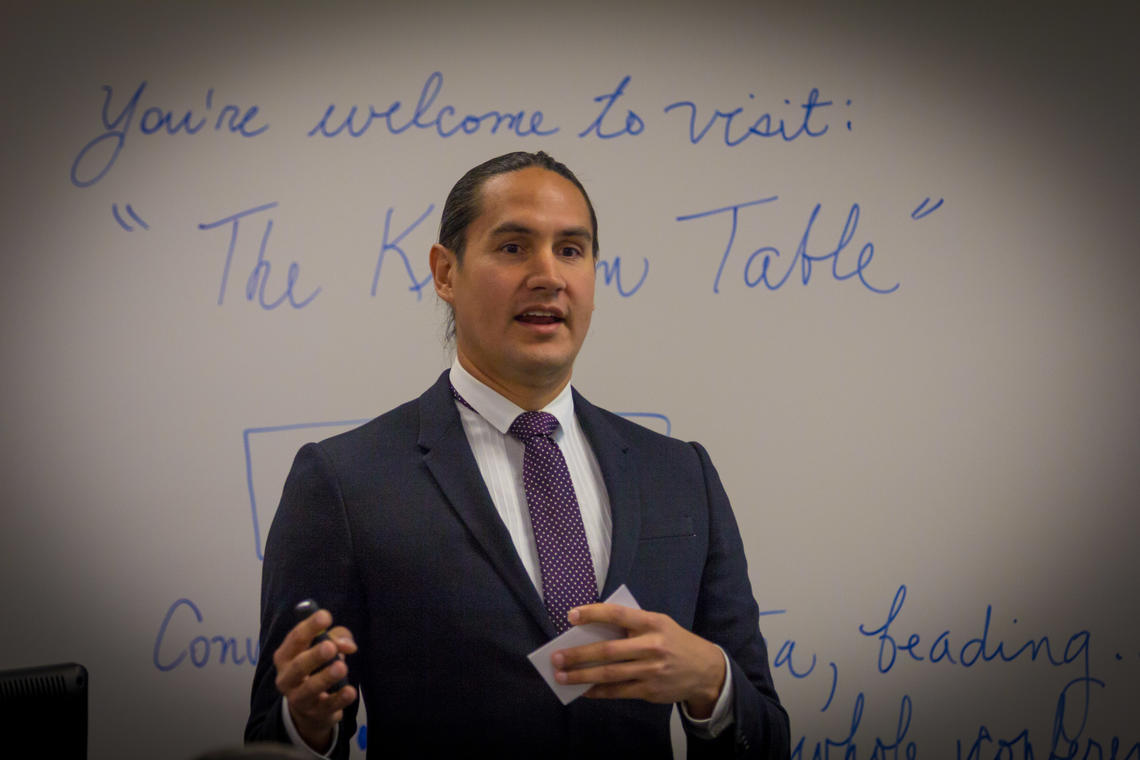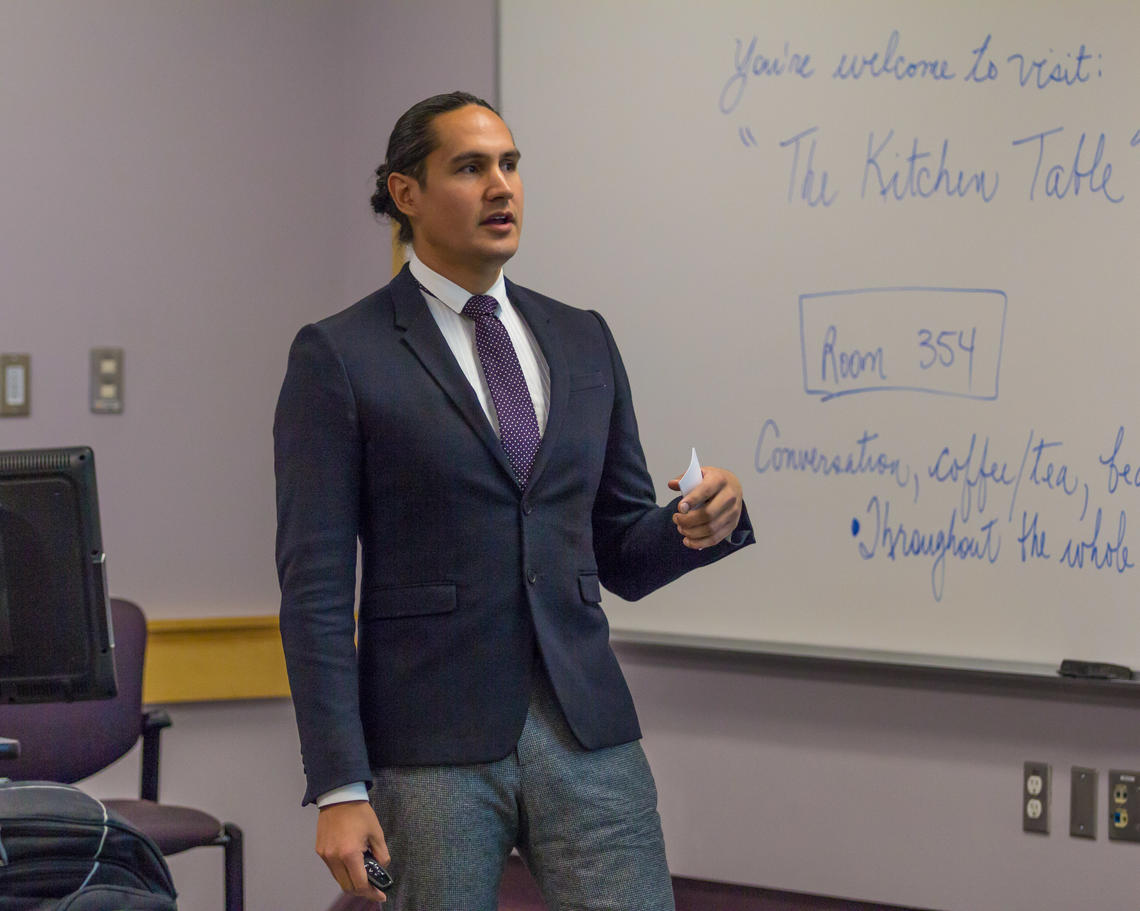May 30, 2016
Research asks: How can we prevent indigenous girls from entering the sex trade?

Dustin Louie University of Calgary Werklund School of Education researcher presents at Congress 2016
David Kotsibie
There is a certain emotional distance created by considering the big picture. Numbers and statistics can be “surprising,” “alarming” or “a cause for concern” — but the concern is generally a coolly detached and theoretical accounting of some remote group.
However, when the numbers are attached to the heart-wrenching and tragic stories of the actual people they represent, they become something more. On a Sunday afternoon session during Congress 2016, Werklund School of Education researcher Dustin Louie presented his research on education initiatives aimed at preventing young indigenous girls from entering the sex trade.
Decolonizing methodology creates empowering, participatory research
Louie pointed out the alarming numbers, the over-representation of indigenous girls in the sex trade. “In some places,” he says, “indigenous women make up between 52 and 98 per cent of women involved in the sex trade.” Going behind these numbers, Louie, who is originally from the Nadleh Wh’auden and Nee Tahi Buhn First Nations of the Carrier People, uses Linda Tuhiwai Smith's Decolonizing Methodologies to analyze the life stories of indigenous women to identify the factors that eventually led them to becoming involved in the sex trade.
The collaborative and empowering research project in Prince Albert identified nine factors associated with a girl being forced into the sex trade — factors the girls had no control over. “The fact that anybody who sees a sex worker on the street and thinks that they're making a decision to be out there is absurd,” explains Louie. “The findings indicate that the first experience in the sex trade happens to girls between the ages of 10 and 13 years old. These are children we're talking about who are getting forced out onto the streets. There was absolutely no decision on their part. There's no agency on their part whatsoever in that happening.”

Louie has received research funding from the Alberta Human Rights Commission.
David Kotsibie
Louie recently received funding from the Alberta Human Rights Commission to continue his research in Calgary. The plan is to take what the collaborative research has uncovered and to create a preventive educational program for an under-served community, based on what they think the community needs. In the third year, he hopes to take that curriculum design and turn it into an actual preventive program for First Nations communities.
Another opportunity to make a difference
“There are so many examples of times when the girls who told their stories could have been ... well, 'saved' isn't the right word, but they could have been supported in a way to help them avoid the place that they end up going to,” says Louie reflectively. “For example, parents reported some of the sexual abuse that they experienced to the police who didn’t even listen to them because they didn't think their parents were reputable people. There are opportunities to have a significant impact on these girls who grow up in these unbelievable environments that basically don't give them a chance.”
Hopefully, three years from now, Louie’s participatory research will provide another opportunity to prevent another life from becoming a statistic.
More than 8,000 scholars in more than 70 disciplines are attending Congress 2016, Canada's largest academic conference, now underway at the University of Calgary from May 28 to June 3.
